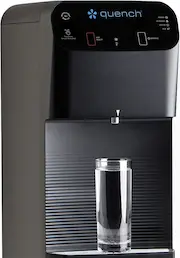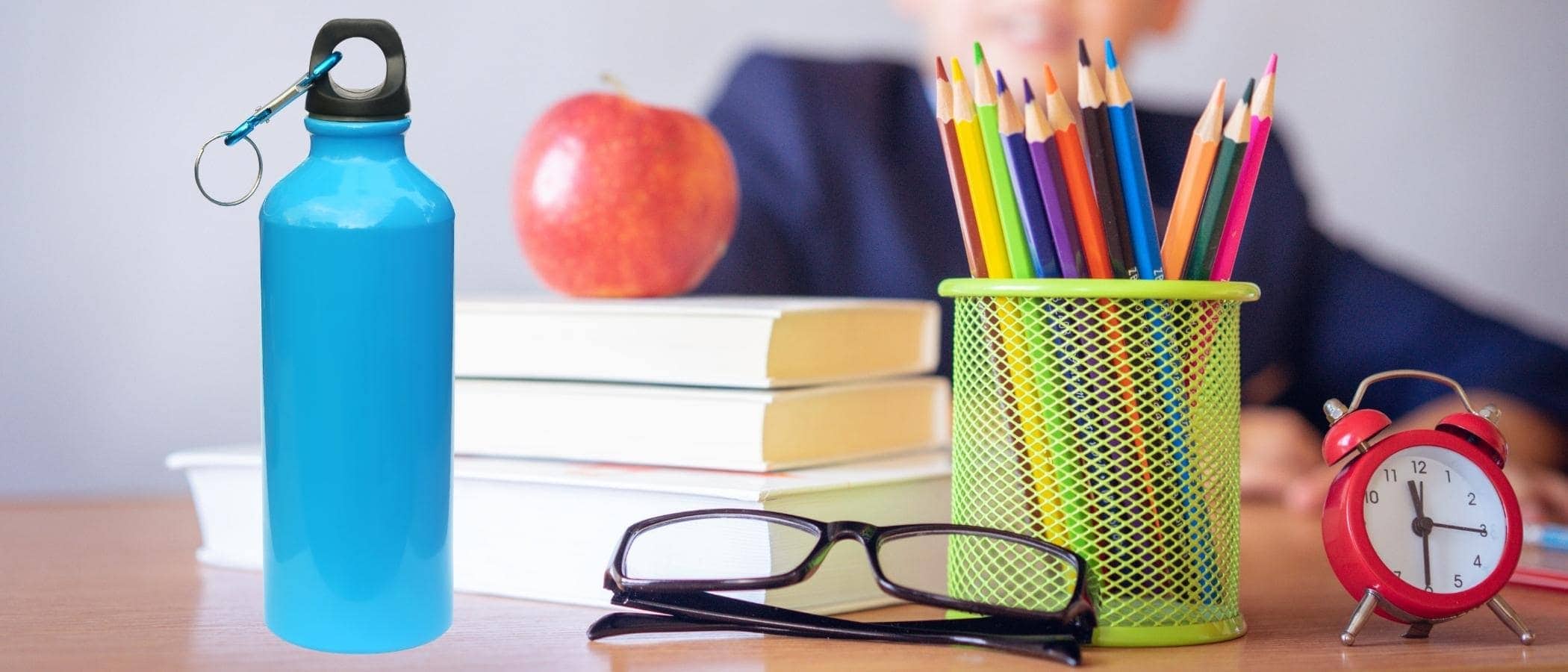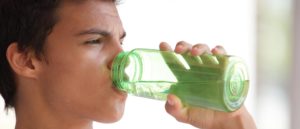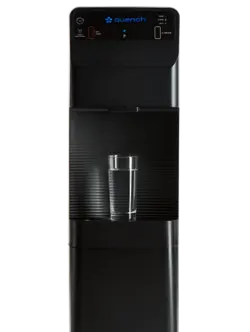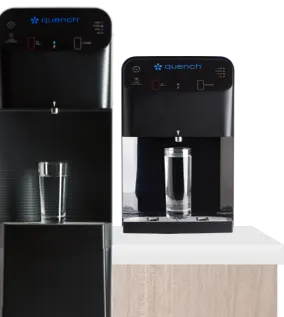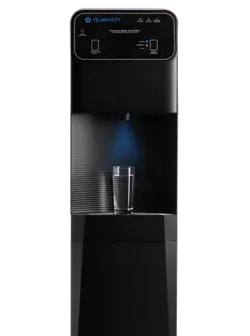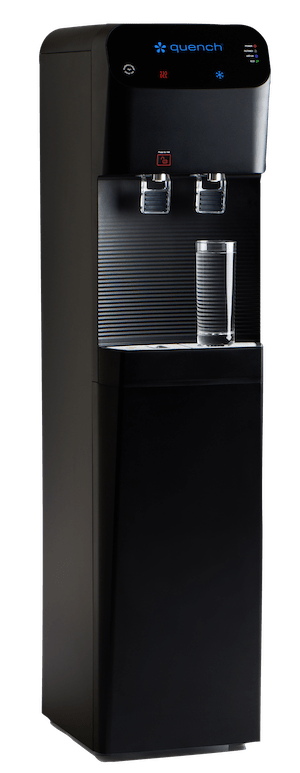Think back to your time as a kid. Do you remember what an ordeal it was to stay hydrated at school? Maybe you had to stand in a line of 20 other classmates and wait your turn to guzzle down gulps at the water fountain. Or perhaps when you got older you were given just a few fleeting moments to snag a couple sips between classes. Kids are allotted a limited amount of free time during school, which can make staying hydrated a tricky undertaking.
Nowadays, the barriers to clean drinking water in schools is causing chronic dehydration among kids across the country. Research shows that a little more than half of all children and adolescents are not drinking enough water. Yet, those kids who do drink enough water tend to be more energetic and focused throughout their day. You can help set kids up for success by removing barriers to proper hydration.
Click here to explore Quench’s robust collection of school water dispensers.
Barriers to Proper Hydration
Bad Taste and Smell
The taste and smell of tap water will vary depending on what’s in it. In many areas of the United States, tap water is filled with impurities that can give off unappealing odors and flavors. Although your initial reaction to bad tasting and smelling water might be to think your water is contaminated, that might not be the case. Your school water might still be safe to drink even if it tastes or smells a bit off. But try telling that to a child. Convincing tots to drink plain water is hard enough. Yet, getting them to buy into the benefits of drinking water at school when the water smells like rotten eggs or tastes like a lukewarm metal pipe is nearly impossible. Yuck!
Having to Pay for Water
Free drinking water is not always readily available. A 2009 survey conducted by Project Lean found that 40% of California schools did not provide students with access to free water in cafeterias. Since that study was conducted, the government passed the Healthy, Hunger-Free Kids Act of 2010, which requires schools participating in the National School Lunch Program (NSLP) to make free water available to students during meal times where they are served. Currently, 95% of schools in the US participate in NSLP. Yet, even if a school offers free tap water, students often still prefer cold vending machine water. Kids don’t normally carry around cash above and beyond what is needed for their school lunch. So, when parents forget to offer up a few dollar bills at the beginning of the day, the vending machine option is ruled out.
Lack of Time to Get to Water
If the factors above don’t keep kids from staying hydrated, then sheer lack of time is often the culprit. A Quench study found that lack of time to get water was the leading reason employees don’t drink enough water in the workplace. Children in educational settings face similar challenges. Depending on the size of a school’s campus and policies, filling up a bottle of water to take with them throughout the day or making a stop by a water fountain or water cooler may simply be too out of the way in order to get to class on time.
Why Kids Need More Water
There are many benefits of drinking water at school. Water can help improve a child’s cognitive function so that they learn more efficiently. Water can also help boost a student’s immune system and fight off possible infections from other students they encounter. Yet, kids miss out on those benefits of drinking water at school when they don’t have easy access to it.
A child’s body surface area makes up a much greater proportion of their overall weight than adults– 60% of a child’s body is made of water. If they lose just 1-2% of water, they are considered dehydrated.
Telltale signs that a child is dehydrated include:
- Trouble concentrating
- Feeling lightheaded, dizzy, or drowsy
- Crying with few or no tears
- Dry mouth, lips, and eyes
- Moodiness and irritability
Side effects of dehydration are widely known, but the increased skepticism around water quality is pushing more adults to offer kids soda or juice as a more trustworthy alternative. Although sugary beverages can help cut immediate thirst, drinking them can lead to further dehydration and other health problems, including weight gain, heart disease, and tooth decay.
How You Can Help Kids Stay Hydrated
Despite all the obstacles standing in the way of students and proper hydration, there are simple and effective initiatives you can implement to encourage them to visit your school water dispensers more often.
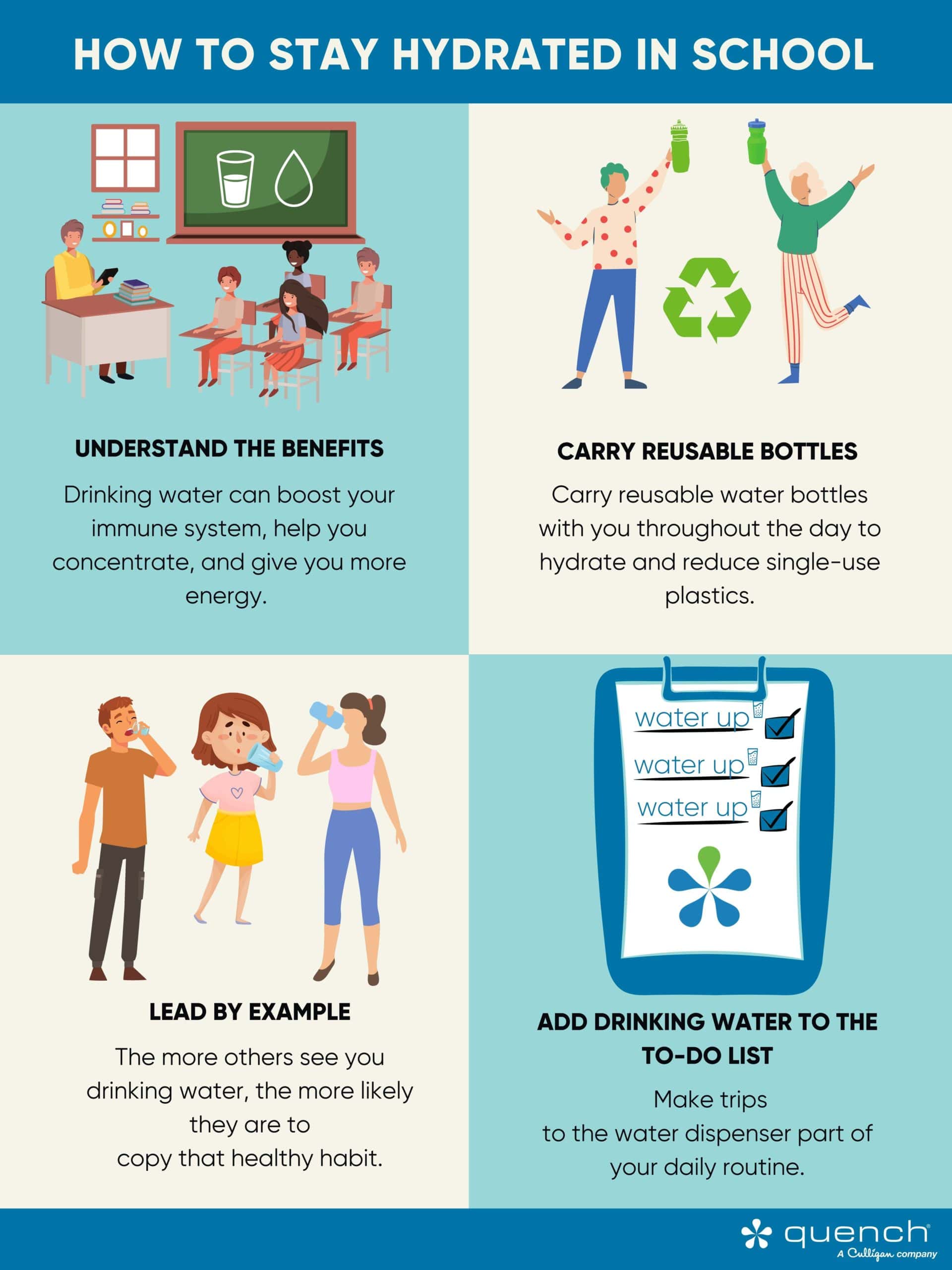
Click here to download the above flyer and display it near your school water dispenser.
- Educate: Raise awareness of the importance of hydration in schools and discuss the benefits of drinking clean water at school.
- Carry reusable water bottles: Allow students to carry reusable water bottles with them throughout the day.
- Lead by example: The more children see you drinking water, the more likely they are to emulate those habits.
- Add drinking water to the to-do list: Make trips to the water fountains part of the daily classroom routine.
You can help students crush their hydration goals by getting a school water dispenser with a reverse osmosis system. Quench offers several school water dispensers that serve as perfect water bottle filling stations for kids in school. Quench water machines come with advanced filtration features like reverse osmosis systems and sanitization options like touchless technology. Those built-in technologies protect children from dangerous contaminants.
If students are displeased with the taste and smell of your building’s drinking water, a water dispenser like the touchless Quench Q8 machine can remove that barrier as well. All Quench Q8 machines dispense an amazing tasting type of water called quenchWATER+. quenchWATER+ is produced through a proprietary 5-Filter Setup that includes a reverse osmosis system. It even adds back electrolytes and healthy minerals to give the kids that extra energy boost and keep them hydrated longer.
The Quench Q8 is completely touchless as well. It uses Position Sensitive Detector (PSD) technology to give students the ability to dispense their clean mineral-infused water without touching a finger. Kids can hover their hands over the Quench Q8 sensor-activated dispensers to release a steady stream of quenchWATER+. With this unique technology, you never have to worry about multiple students or faculty members handling the same machines day in and day out.
If you’re still not sold on the benefits of a touchless school water dispenser from Quench, consider this: A touchless dispenser eliminates the need for water delivery. That means no risking cross-contamination when escorting delivery people in and out of your school building and no using valuable space as storage for 5-gallon water jugs. Instead, you can use that extra space you get from a school water dispenser to adhere to social distancing protocols.
Students in your school deserve readily available, premium water they can drink without risking illness. And you don’t have to break the bank to get them that water. Click on the green “Get a Free Quote” button to learn how you can cut costs with a Quench’s school water dispensers. Also be sure to visit our Product Finder to see which school water dispenser is best for your educational building.
